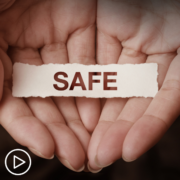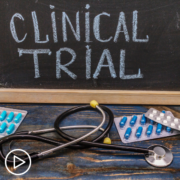Are CLL Clinical Trials Safe?
Are CLL Clinical Trials Safe? from Patient Empowerment Network on Vimeo.
What should CLL patients know about clinical trial safety? CLL expert Dr. Adam Kittai explains concerns that patients should discuss with their doctor, the level of research before Phase I studies, and drug safety monitoring.
Dr. Adam Kittai is a hematologist and an assistant professor at the The Ohio State University Comprehensive Cancer Center – The James. Learn more about Dr. Kittai, here.
See More from CLL Clinical Trials 201
Related Resources:

|

|

|
Transcript:
Katherine:
Patients often have questions about safety. What are the risks of clinical trial participation?
Dr. Kittai:
Yeah, so before anybody enrolls onto a clinical trial, you should sit with your doctor to talk about the pros and cons of entering this clinical trial. One of the things that they will talk to you about is what the expected safety of this drug is. So, you might ask yourself, well, if it’s a phase one study, first in human study, how do they know what toxicity to expect?
Katherine:
Right.
Dr. Kittai:
The answer is that there’s a lot of pre-human studies that occur, both in mice and monkeys and other animals, and researchers often have a good idea of what to expect in human. But there is a lot of unknowns in a phase one clinical trial. And after discussing with your doctor the pros and cons of going on a clinical trial and what side effect profile to expect from whatever drug or combination that you are about to be using, usually you go through a consent.
Usually, you’ll get a packet, it’s about 10 to 20 pages long, written in a way that patients can understand. And it’ll have a list of toxicities that are associated with the research that is occurring. In terms of knowing what adverse events might happen, the consent is key, because it’ll have those all listed out.
And also having the conversation with your physician about either what they’ve experienced giving this clinical trial, or what is to be expected after this drug had been introduced pre-humans.
Katherine:
Mm-hmm. Are there protocols in place to protect patients?
Dr. Kittai:
Yes. So, remember how we talked about in the phase one trials, we dose escalate the drug until we’ve reached some toxicity limit? There are specifically rules written out in a protocol that the doctor must follow that ensures safety for the patients that enroll in clinical trials. And that dose escalation part where we reach a toxic limit is a key part of those phase one trials that is spelled out before you even enroll.
Usually, there’s also something called a Data Safety Monitoring Committee, as well as other committees that are looking at patients as they are receiving these drugs and move forward on clinical trials to make sure that the investigators are following the protocol as printed. That if anything happens, they document why it happened and fix the problem before it becomes another problem for a patient. So, there are very specific safety rules and a lot of redundancy to protect our patients, because the number one priority is to protect the patient.
Katherine:
Yeah. I think you’ve already answered this, Dr. Kittai, but how do you know the medicine is safe before a human trial even begins?
Dr. Kittai:
The answer is you don’t. There is some risk. As I said, they do test it in animals before they give the drug to humans, and they usually start at the lowest dose possible. But there are certain circumstances where there are surprising side effects that are not expected. And so, when you’re entering a first in human, Phase I trial, that is a specific risk that you do need discussed with your physician about before you enroll.
Katherine:
Can a patient change their mind once they’ve enrolled in a clinical trial?
Dr. Kittai:
Always. Always.
Katherine:
Okay.
Dr. Kittai:
They can come off the clinical trial at any point if they choose to.




